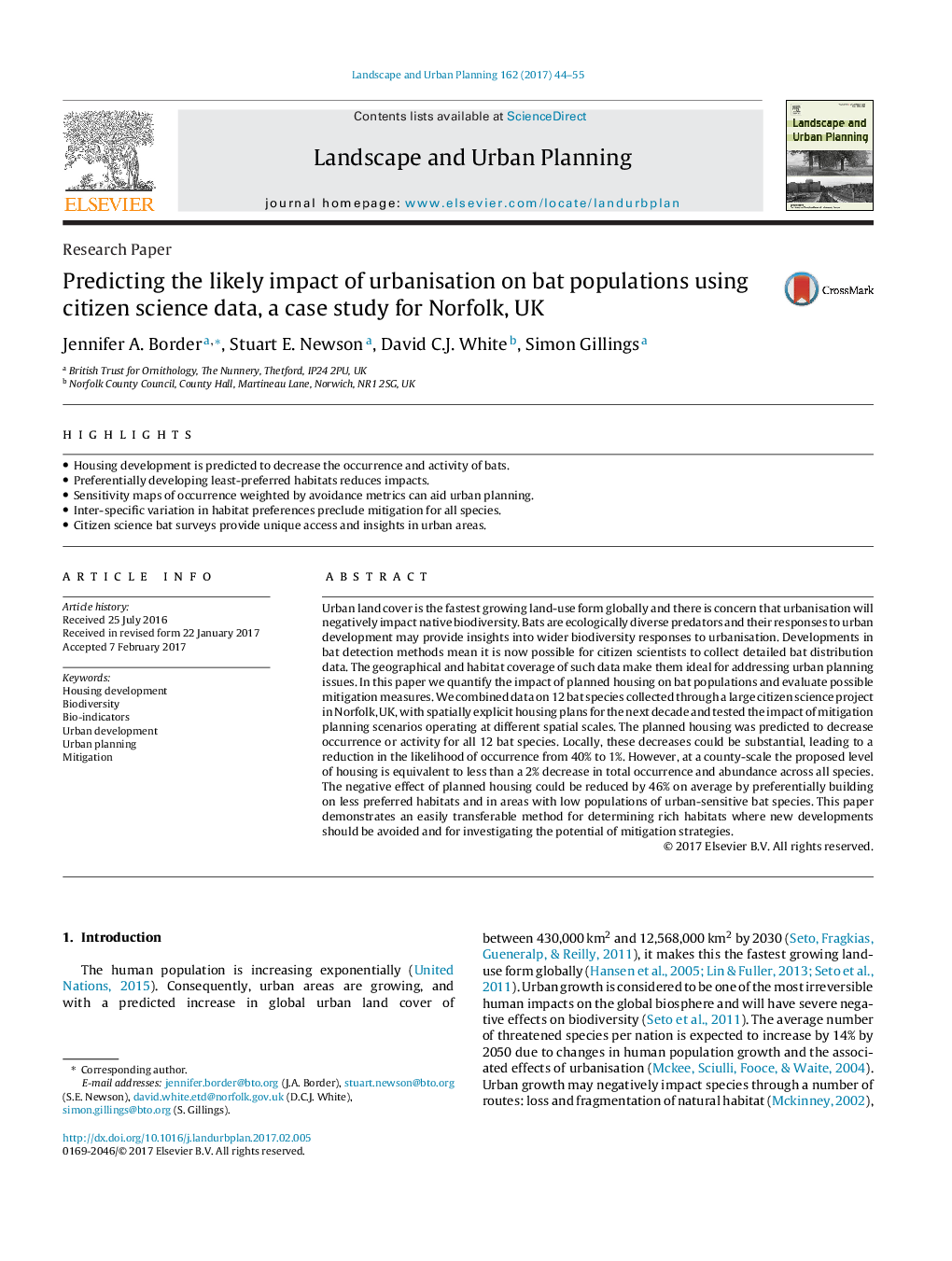| Article ID | Journal | Published Year | Pages | File Type |
|---|---|---|---|---|
| 5115044 | Landscape and Urban Planning | 2017 | 12 Pages |
Abstract
Urban land cover is the fastest growing land-use form globally and there is concern that urbanisation will negatively impact native biodiversity. Bats are ecologically diverse predators and their responses to urban development may provide insights into wider biodiversity responses to urbanisation. Developments in bat detection methods mean it is now possible for citizen scientists to collect detailed bat distribution data. The geographical and habitat coverage of such data make them ideal for addressing urban planning issues. In this paper we quantify the impact of planned housing on bat populations and evaluate possible mitigation measures. We combined data on 12 bat species collected through a large citizen science project in Norfolk, UK, with spatially explicit housing plans for the next decade and tested the impact of mitigation planning scenarios operating at different spatial scales. The planned housing was predicted to decrease occurrence or activity for all 12 bat species. Locally, these decreases could be substantial, leading to a reduction in the likelihood of occurrence from 40% to 1%. However, at a county-scale the proposed level of housing is equivalent to less than a 2% decrease in total occurrence and abundance across all species. The negative effect of planned housing could be reduced by 46% on average by preferentially building on less preferred habitats and in areas with low populations of urban-sensitive bat species. This paper demonstrates an easily transferable method for determining rich habitats where new developments should be avoided and for investigating the potential of mitigation strategies.
Related Topics
Life Sciences
Agricultural and Biological Sciences
Ecology, Evolution, Behavior and Systematics
Authors
Jennifer A. Border, Stuart E. Newson, David C.J. White, Simon Gillings,
